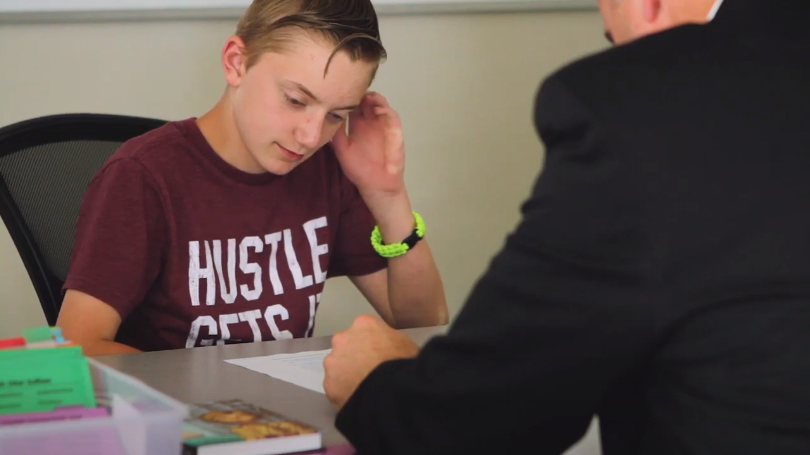Why We Do It
“The students in my class that pass the RISE Reading Workshop Course are ready to teach reading and Phonics in their student’s classroom, they know phonics inside and out.”
- Professor Chris Sloan
“The RISE Reading Workshop is going to enable professors to expose teachers to the basic fundamental skills of phonics instruction”
- Dr. Brian Ludlow
“I went to a RISE seminar and everything the keynote speaker said about her son rang true in my heart… As he began to be able to read out loud and understand it… he became a whole new person.”
-Rave’s Mother
In 7th grade, she was a nonreader, she struggled in every area of academics. We came to the conclusion that she was dyslexic. We brought her to RISE and in just over a year, she is a whole different person.
-Cassidy’s Mother
“After coming to RISE I felt much more confident in myself.”
-Parker
“RISE helped me to learn a new way to read.”
-Steiner
“Since I’ve been in the program, I’ve been able to read a lot better and comprehend what I read a lot better, and I’m reading a lot faster.”
-Randall
The Problem
According to the U.S. Department of Education about 54% of U.S. adults—130 million people—read below a sixth-grade level.[1]
Low adult literacy rates cost the U.S. up to $2.2 trillion in lost revenue each year.[1]
The National Institute of Literacy says that 43 percent of adults with the lowest literacy levels live in poverty.[2]
The U.S. Department of Justice (DOJ) has data showing that 75 percent of state prison inmates are either classified as low literate or did not complete high school.[2]
The American Library Association says a child who is a poor reader at the end of first grade has a 90 percent chance of still being a poor reader at the end of fourth grade.[2]
Dr. Sally Shaywitz from the Yale Center for Dyslexia & Creativity. Wrote that, “reading disability affects approximately one child in five”[3]
According to the NICHD “About 40% of the population have reading problems severe enough to hinder their enjoyment of reading. These problems generally persist into adulthood without appropriate intervention.[4]
Many preservice teachers are not receiving the instruction they need to be able to teach reading effectively. We believe the solution to the reading dilemma is to go straight to the source: colleges of education/preservice teachers.[5][6]
The Solution
RISE Institute for Literacy believes
By training pre-service teachers to effectively teach students using phonics and the science of reading, a generation of struggling readers can be taught to successfully read, leading to a lifetime of success.
Intervention with struggling readers and those with reading disabilities will change their lives forever.
An informed parent with the right resources and tools can be a primary source of reading intervention for their children.
The solution is to go straight to the source: the colleges of education and their preservice teachers.[3][4]
The average student gains 2-3 grade levels in reading after 40-60 hours of instruction with RISE
“The science of reading includes methods and approaches that have been found, through research, to give every student a learning advantage in reading.”
-Shanahan, 2019
References
https://www.barbarabush.org/new-economic-study via Forbes
https://www.libraryjournal.com/?detailStory=How-Serious-Is-Americas-Literacy-Problem
Shaywitz, S. M. D. (2003). Overcoming Dyslexia. New York: Vintage Books.
Grossen, B. (1997). A Synthesis of Research on Reading from the National Institute of Child Health and Human Development. University of Oregon
Moats, Louisa. “Knowledge Foundations for Teaching Reading and Spelling.” Keys to Literacy, Springer Science Business Media B.V., 23 Jan. 2009, www.keystoliteracy.com/wp-content/pdfs/orc-genlit/Knowledge of foundations for teaching.pdf.
Brady, Susan, and Louisa Moats. “Informed Instruction for Reading Success: Foundations for Teacher Preparation. A Position Paper of the International Dyslexia Association.” ERIC Institution of Education Sciences, 1997, files.eric.ed.gov/fulltext/ED411646.pdf.








